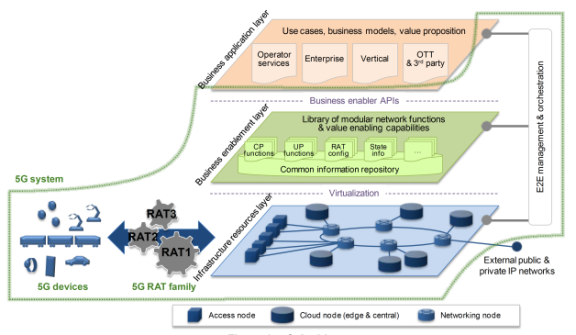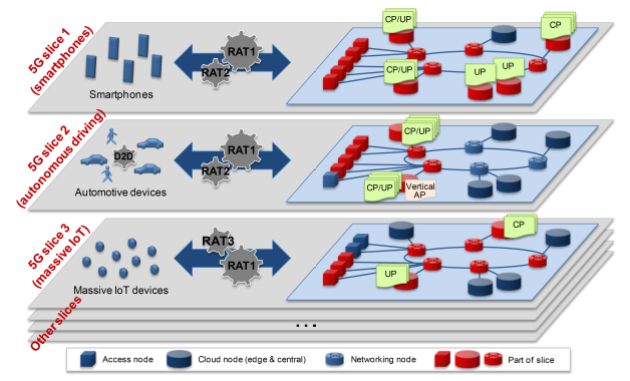 Is 5G an evolution or a revolution? In an earlier article I said 5G is an evolutionary stage. Many disagreed: 5G is a revolutionary technology. But this is all a matter of perspective. The evolution vs. revolution debate has largely focused on the air interface, or the ‘subscriber interface’: everyone wants to have fast wide-bandwidth connectivity. Naturally, it is the user experience that takes center attention. In my opinion, this is not a revolutionary aspect as 5G will package the same technologies with upgrades in implementation that reflects advancements in technology since LTE was first conceived in 2004 (yes, that’s 12 years ago!!). Instead, I think that the revolutionary aspect is related to the ‘backend’ or the ‘operator interface’: it is in virtualizing the network.
Is 5G an evolution or a revolution? In an earlier article I said 5G is an evolutionary stage. Many disagreed: 5G is a revolutionary technology. But this is all a matter of perspective. The evolution vs. revolution debate has largely focused on the air interface, or the ‘subscriber interface’: everyone wants to have fast wide-bandwidth connectivity. Naturally, it is the user experience that takes center attention. In my opinion, this is not a revolutionary aspect as 5G will package the same technologies with upgrades in implementation that reflects advancements in technology since LTE was first conceived in 2004 (yes, that’s 12 years ago!!). Instead, I think that the revolutionary aspect is related to the ‘backend’ or the ‘operator interface’: it is in virtualizing the network.
Todays networks don’t implement much virtualization despite the intentions of MNOs, as for example in AT&T Domain 2.0, Telefonica UNICA. This means slow and expensive service creation that limits the ability of MNOs to compete especially agains the OTTs who leverage the Internet infrastructure to create an agile and scalable environment for service creation.

5G Architecture. [Source: NGMN]
The 5G core will provide a leap in implementation, scale, performance and programmability. It will leverage virtual machines (VM) and hypervisors technologies that run on premise or in a cloud environment. This architecture lays the foundation for a transition from dedicated hardware systems to SDN models to control the virtual environments and various components of the architecture built with NFV concepts.
The impact of virtualization on operator’s business processes will be profound. From the manner in which services are offered, designed, provisioned and delivered, it will be a step change from today. This can be considered revolutionary in the telecom space as it integrates with the Internet.

5G Network Slicing. [Source: NGMN]
The 5G core is not expected to be commercially deployed until 2022 when Phase 2 5G become available. Until then, the LTE EPC core will be leveraged for interim Phase 1 5G deployments.
Note: as I was about to publish this article, I came across this interesting article on investments in SDN/NFV amounting $600 million in 2015. I can only guess that interest in this sector will increase as the telco network is overhauled.
Pingback: Carving Gold from IoT, But What Karat? – Ascom Network Testing Blog